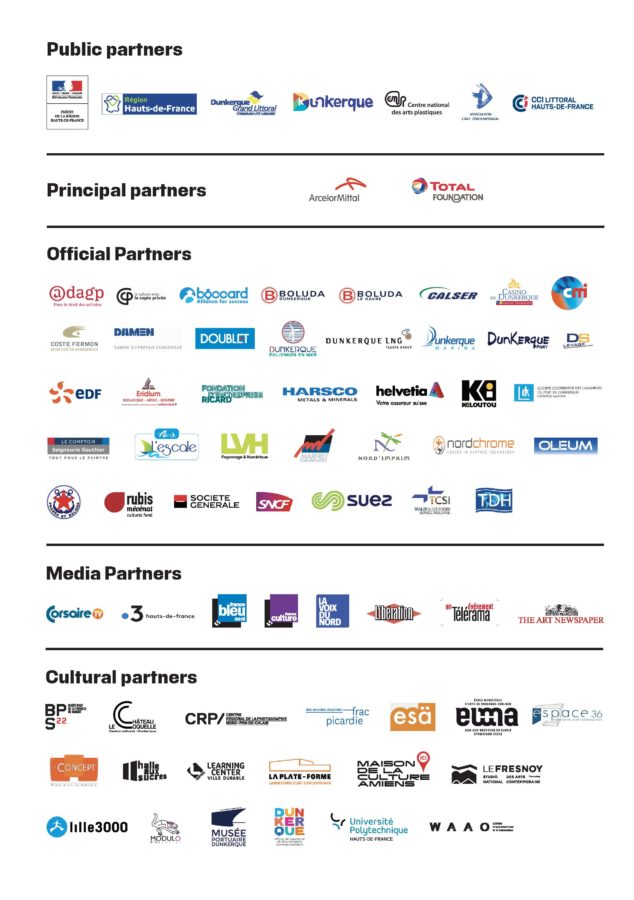GIGANTISME — ART & INDUSTRIE
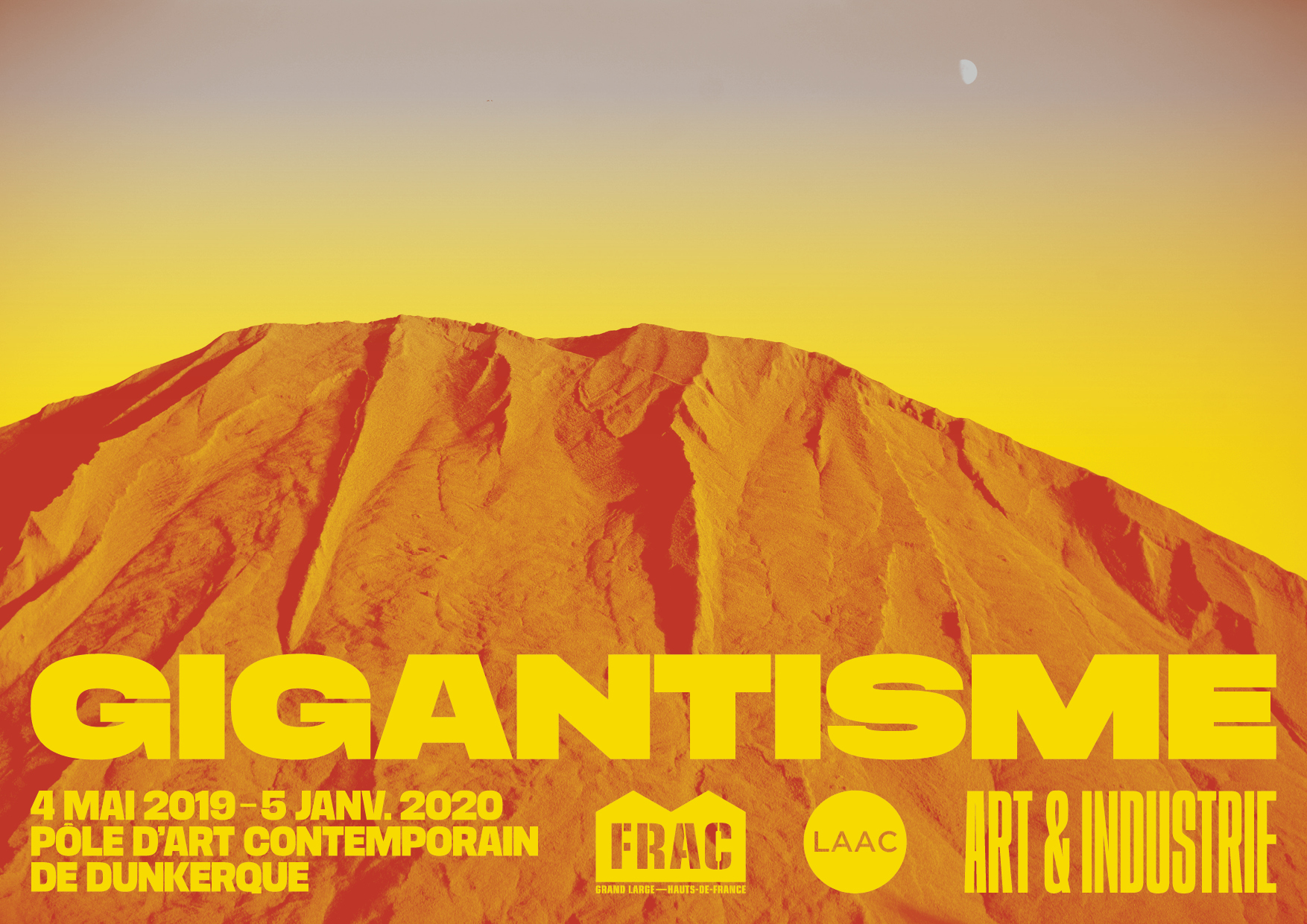
GIGANTISME — ART & INDUSTRIE is a one-of-a-kind collective initiative for the Hauts-de-France region, based in Dunkirk: the creation of a new art and design triennial in Europe.
MAY 4th 2019 – JANUARY 5th 2020
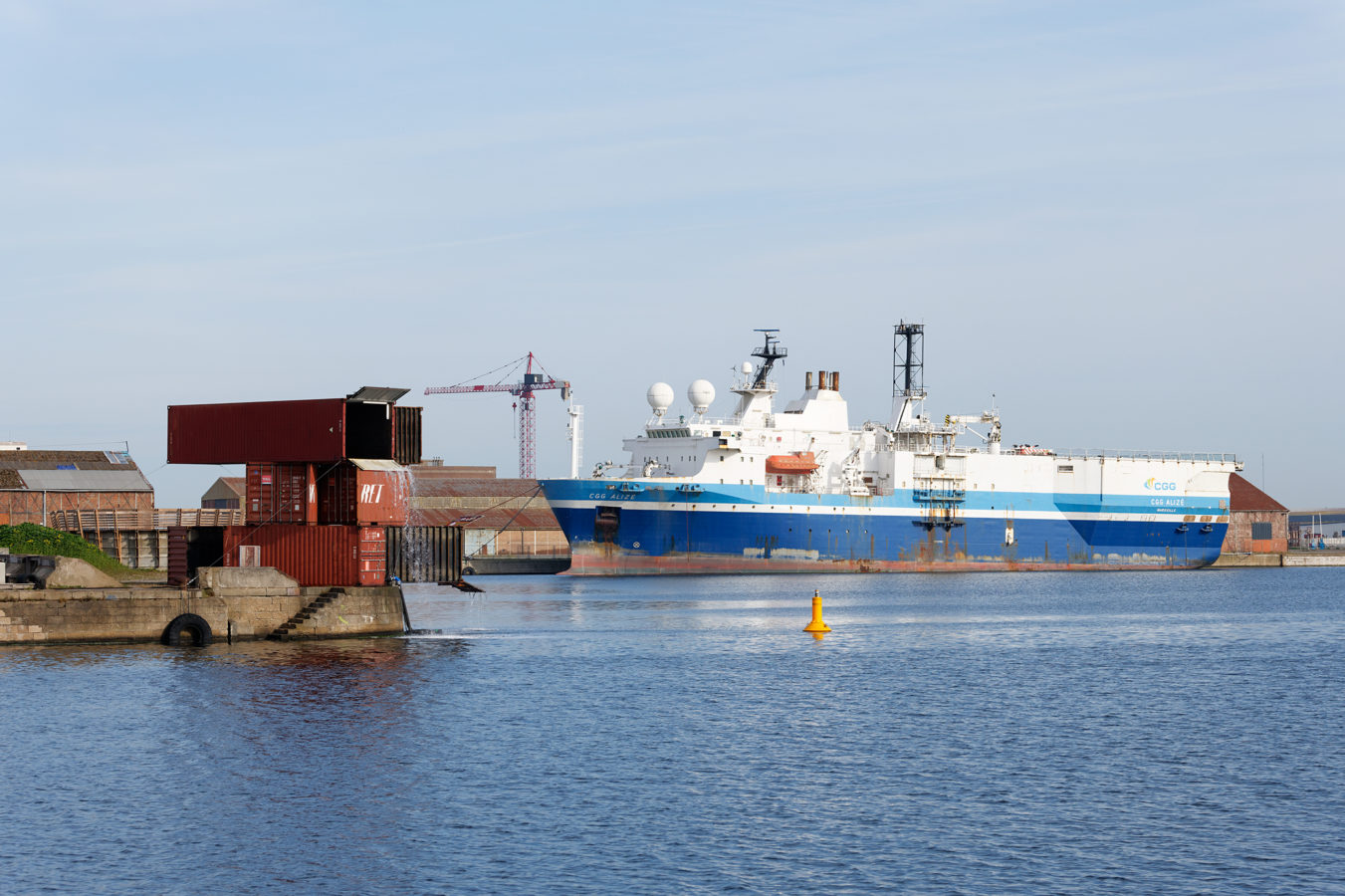
Frac Grand Large — Hauts-de-France, Dunkirk
An exhibition of out-sized installations, specially created for the occasion, of in situ works, of sculptures, paintings, films and performances will embody encounters and minglings between artists and engineers, designers and architects. The event will occupy a variety of exhibition spaces, as well as urban and port sites. A unique artistic exploration investing the Dunkirk landscape, straddling living heritage and contemporary creation, to reconsider the history of European modernity, from 1947 to the present day.
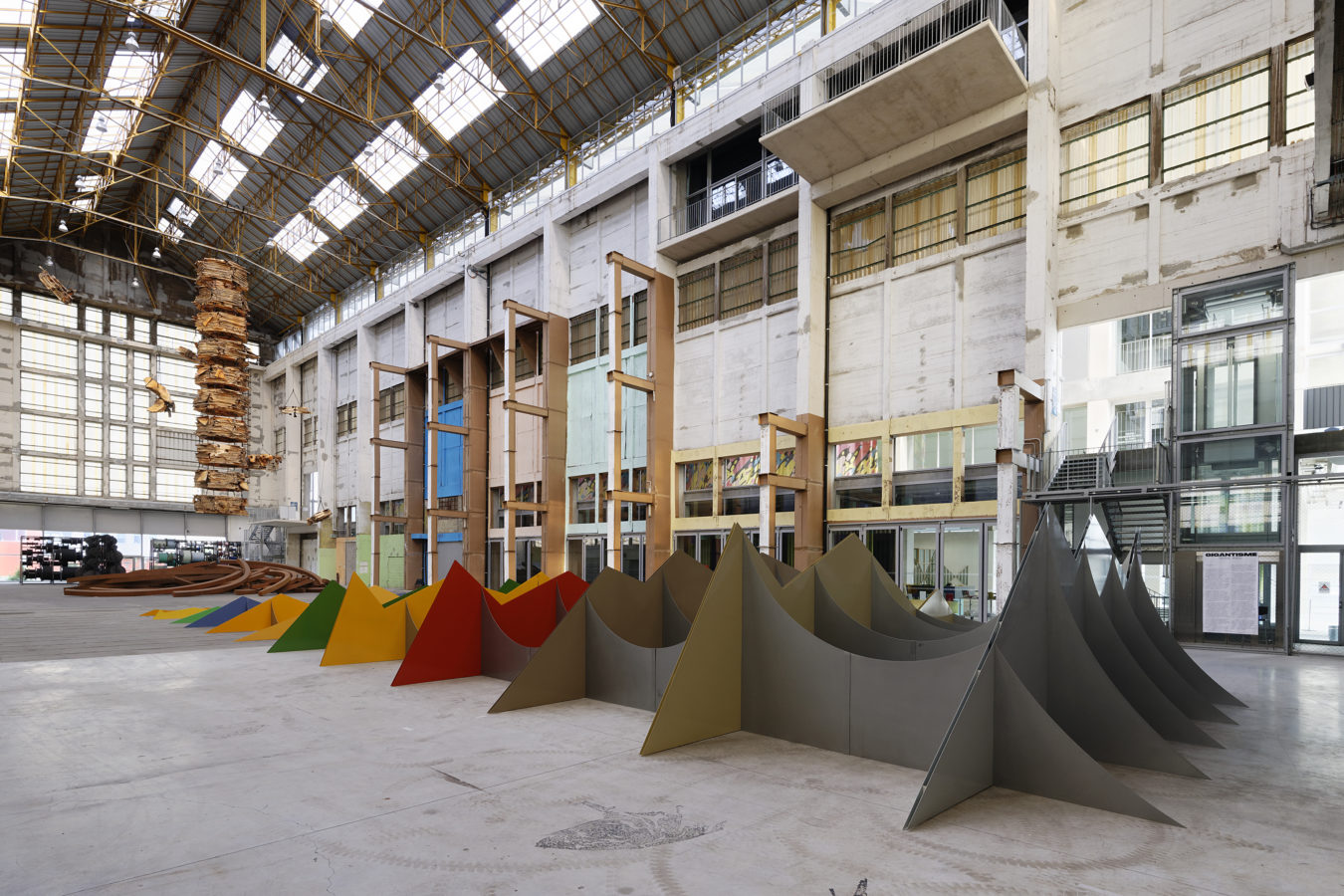
Frac Grand Large — Hauts-de-France, Dunkirk
#1 IN EUROPE (1947−1989)
GIGANTISME stands out for its unique spirit that, post-WWII, contributed to the very foundations of European modernity.
This cultural and artistic history is in part marked by a singular convergence of art and industry, engendering a transformation of techniques, processes and ideas. This living heritage, on which so little has been written, merits greater consideration and exploration. Comprehending how this Western modernity was thought, formed and spread is key to grasping its underlying issues and implications. Putting its evolution into perspective allows us to lend nuance to oppositions between progress and deceleration. Qualified by historians as a pivotal year, 1947 marks the initiative for a reconstruction following an unprecedented existential crisis that saw the founding concept of humanism and its concomitant values seriously shaken. Reduced and essentialized during the dark years, “national identities” starting in the late 1940s became the subject of an artistic, intellectual, social and economic reappropriation. A collective effervescence seeking to contribute to the advent of a confident, sure future.
Reflecting a shared adhesion to this conflict- and crisis-free future, a new landscape emerged in record time (another quality of gigantism) starting in the mid-1950s and really taking off in the 1960s. The exploitation of raw materials and the circulation of energies (steel, coal, petrol, nuclear electricity, etc.) at the heart of industrial power and international policy (notably with the European Coal and Steel Community, ECSC) transformed our entire relationship with space, lent colossal, gigantic form in the countryside, in the city and along the coast. These new spatial scales, backed by the possibility of imagining a world beyond that of Earth, influenced the period’s productions tending to free themselves from the painting’s framed canvas and the sculpture’s pedestal. Such works were born from collaborations between artists and engineers or architects. One could evoke, in certain cases, a European land art concomitant with the better known North American movement. Skills associated with productivist activities – welding, assembling, accumulating, styling, etc. – were transformed into artistic techniques. These collaborations, encouraged by the period’s new cultural policy, constitute a history of important and especially fertile artistic and industrial practices that would only come to an end in the 1970s, with the oil crisis rattling the faith in a seamless, boundless future. The most notable transformation was the increased standard of living for many Europeans, resulting in the production and diversification of ever more numerous everyday objects. Luxury goods such as cars and household appliances became accessible, so-called consumer goods, presented at expos, spread by the media and transcended by intellectuals into philosophical objects. What had previously been singular and rare became serial, like the infinitely multiplied motifs of French abstract art. Processual gigantism, common to both art and industry, was concomitant with a certain French-style minimalism. Design was redefined through simplification of the “form follows function” principle for improved productivity, influencing the aesthetic of home interiors as much as artistic installations. And the aesthetic of supermarkets, advertisements and urban houses impregnated a more critical Pop Art “made in France”.
France’s villes nouvelles, its modern new towns designed in the 1960s and blossoming in the 1970s, adopted an urban design imbued with artistic visions. Yet a pendulum swing between the late ‘60s and early ‘70s saw the fantasy and whimsy accompanying leisure society and extending to artists’ architectural and urbanistic projects, become critical of mass society and culture. Distortion, documentary and satire nourished creators’ imaginations. Modernity, characterized by its desire to think big, became specious, subject to mockery, decried for its favouring anonymity, its homogenization of singularities. Brands, the emergence of managerial methods and new telecommunication tools, inherited from a dual fascination for and suspicion of the United States since the Marshall Plan, were vectors of a new modernity, a new world at odds with that which had relaunched Europe following the Second World War. The rising service sector prevailed over rural and blue-collar cultures, announcing the transformation of relations between ART & INDUSTRY.
Unemployment became menacing. The presence of immigrants from former colonies, who had significantly contributed to the European states’ reconstruction efforts in the 1950s and ‘60s, was questioned by emerging nationalisms. In the 1980s, chain stores, brands, hypermarkets and throwaway fashion reconfigured urban centres and peripheries, as well as national borders. Certain industrial activities abandoned at the profit of others testified to various painful transitions. However, their architectures remained, with fascinating, imposing ruins prefiguring the industrial wastelands to come. While being criticized for failing to sufficiently share its prosperity and influence with the community, manufacturing did contribute an imagery, a powerful cosmogony that continued to fuel artistic creation, providing a certain symbolic value system uniting both worlds. Thanks to the media boom of the press, radio and television, visual and musical cultures occupied the heart of a new effervescent ART & INDUSTRY dynamic, at once dematerialized, counter-culture and globalizing in nature. At the same time, performance-based forms and audio-visual installations boomed.
The fall of the Berlin Wall in 1989 was experienced collectively, simultaneously and live on TV, disrupting the international geography and history written and established during the Cold War. This turning point heralded nascent geopolitical, ecological and technical paradigms that would pose challenges to gigantism, the state of mind uniting ART & INDUSTRY.
Keren Detton, Géraldine Gourbe, Grégory Lang & Sophie Warlop
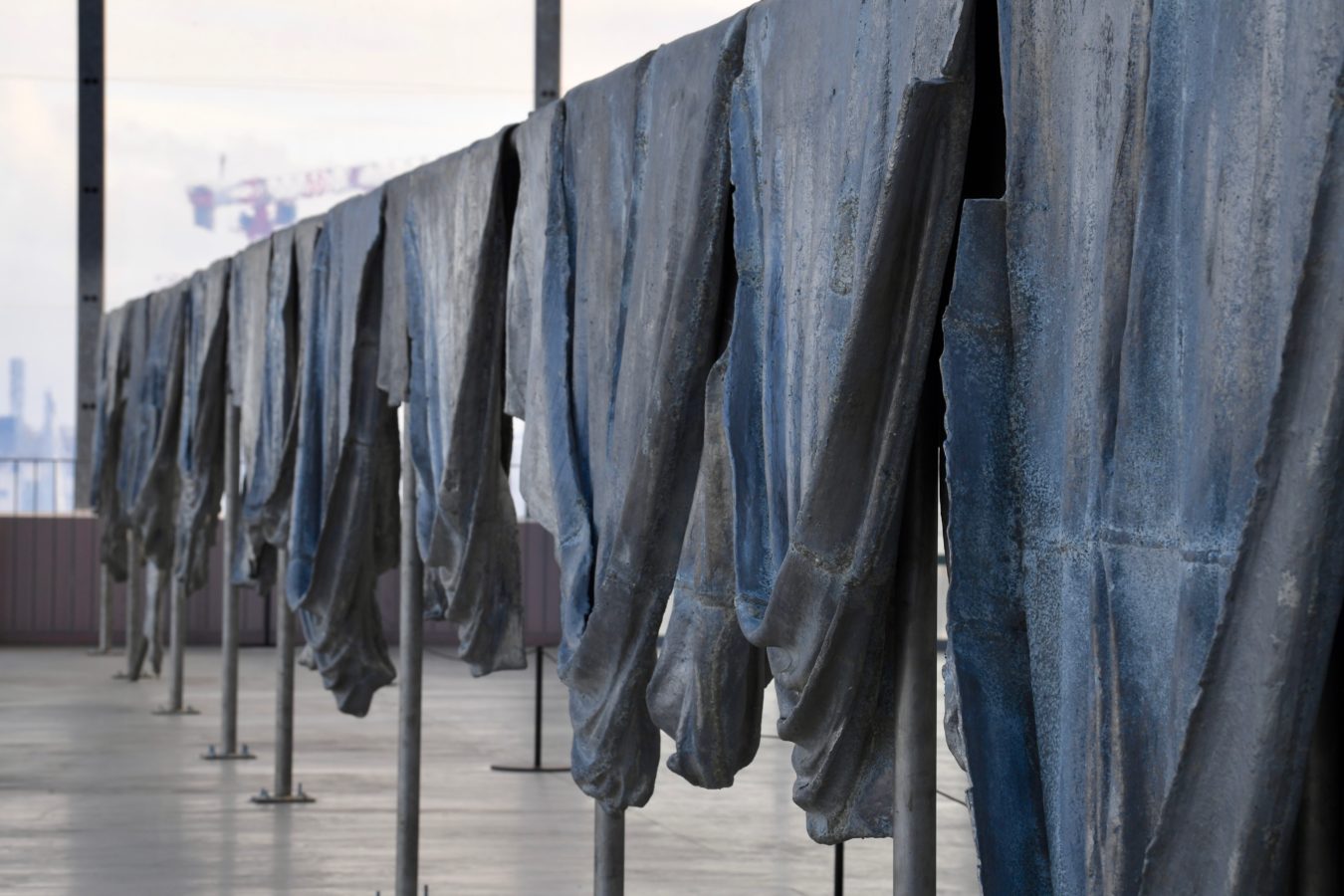
SEVERAL SITES
GIGANTISME — ART & INDUSTRIE will occupy several emblematic sites of the Dunkirk Contemporary Art Hub:
- The Halle AP2 industrial wasteland
- The FRAC Grand Large – Hauts-de-France regional collection of contemporary art
- The LAAC contemporary art museum
- Nearby public spaces: the parvis, in front of the footbridge, in and around the LAAC sculpture garden, along the outlet canal and the dike, the Malo-les-Bains beach, and extending all the way to the marinas and breakwaters
- In resonance with collaborating spaces both in town and around the region(Dunkirk Port Museum, Halle aux Sucres Learning Centre, Plate-Forme in Dunkirk, WAOO in Lille, etc.).
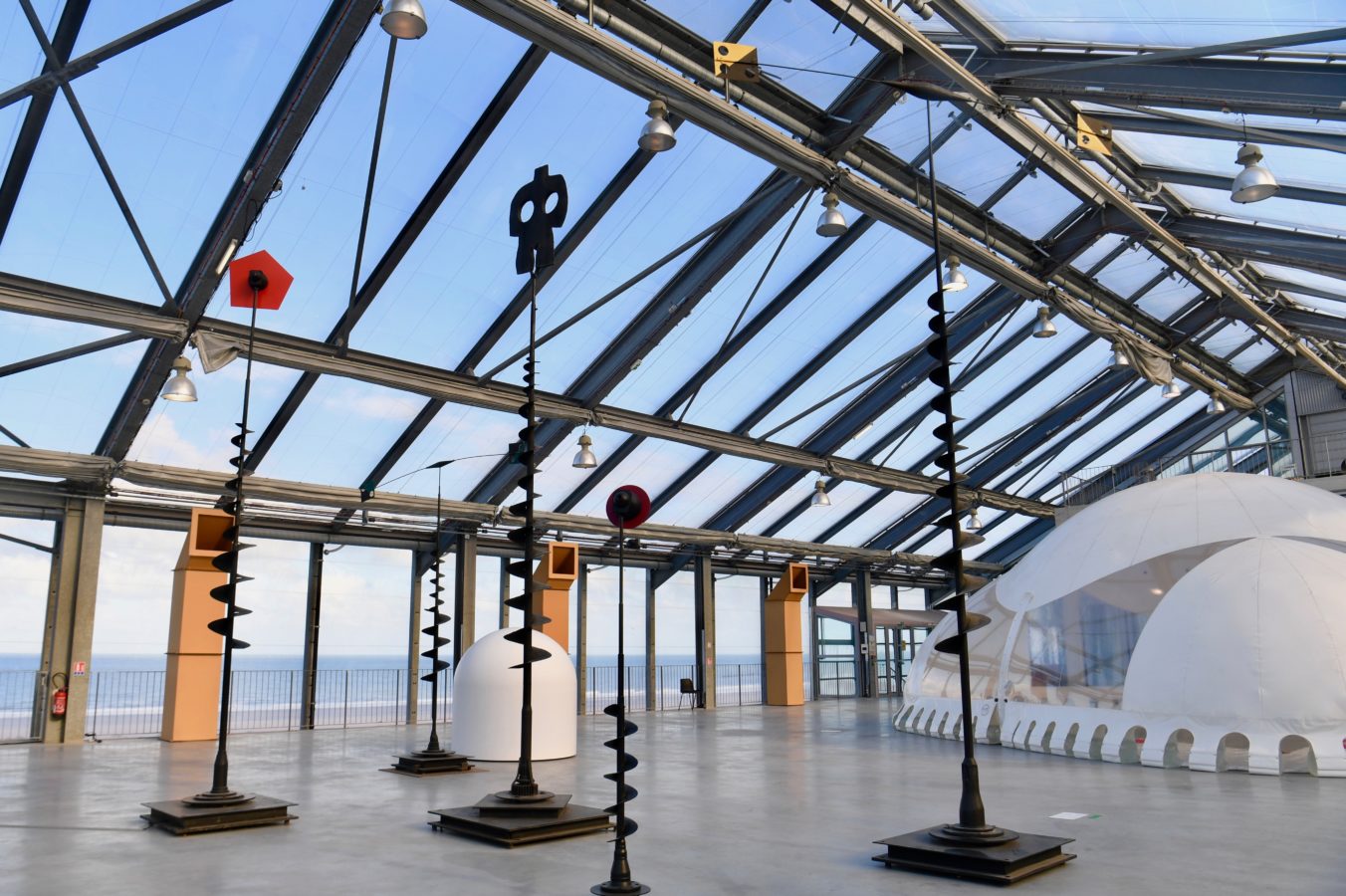
FIVE SEPARATE CHAPTERS:
- Chapter 1: Mental Landscapes
- Chapter 2: À l’américaine
- Chapter 3: Space is a House
- Chapter 4: Parallel Screens
- Chapter 5: High Points, Low Points
A COLLEGIAL ARTISTIC DIRECTORSHIP
- Keren Detton
Director of the FRAC Grand Large — Hauts-de-France regional collection of contemporary art - Géraldine Gourbe
Philosopher and independent curator, specialized in the Los Angeles art scene. Since 2015, she has worked on a rewriting of French cultural history from 1947 to 1981 - Grégory Lang
Independent curator and producer, founder of Solang Production - Sophie Warlop
Director of the LAAC contemporary art museum and the Dunkirk Fine Arts Museum
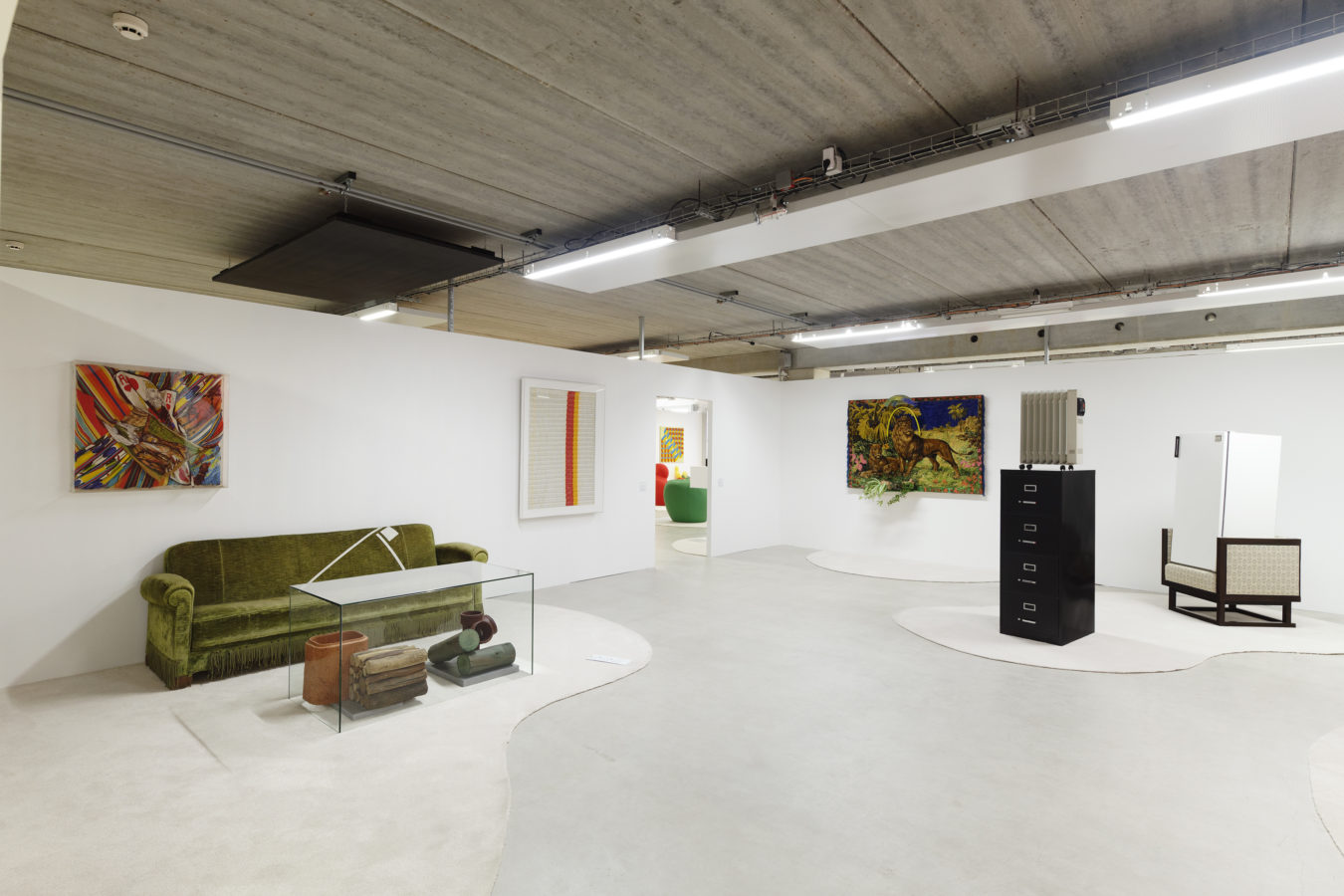
Frac Grand Large — Hauts-de-France, Dunkirk
PARTNERS
GIGANTISME — ART & INDUSTRIE federates companies for the creation of unique artistic productions, assembles public and private European art collections, and relies upon a local, participatory, civil-society-based movement, in collaboration with municipal, regional and national
institutions.
GIGANTISME — ART & INDUSTRIE is jointly organized by the FRAC Grand Large — Hauts-de-France and the LAAC of Dunkirk, in collaboration with the association L’Art Contemporain and the Littoral Hauts-de-France Chamber of Commerce and Industry.
The Cnap (National Fine Arts Centre) is a partner of GIGANTISME — ART & INDUSTRIE.
GIGANTISME — ART & INDUSTRIE benefits from the support of the French Ministry of Culture and Communication (DRAC Hauts-de-France), the Hauts-de-France Region, the Urban Community of Dunkirk / Grand Littoral and the City of Dunkirk.
